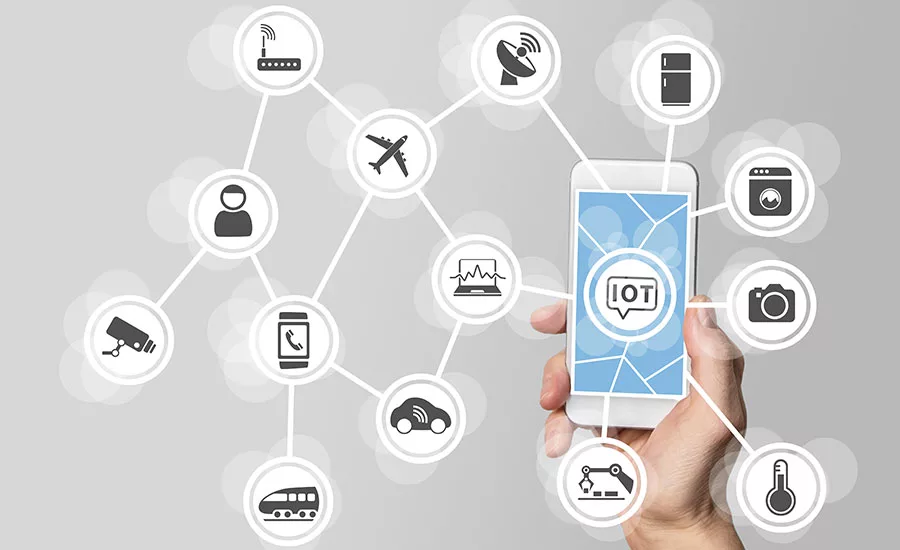Top security considerations for enterprises planning IoT adoption

Amid the business disruption caused by the ongoing pandemic, more and more enterprises are recognizing the Internet of Things’ (IoT) vast potential to help them stay competitive. The IoT offers enterprises superior visibility into their operations, enabling organizations to maintain control and stay agile—even in the face of market uncertainty. For these reasons, it’s no surprise that BI Intelligence reports that those who adopt IoT can experience increased productivity, reduced operating costs and expansion into new markets.
However, despite the IoT’s promise, there remains one common barrier to adoption—concerns over the technology’s security. According to Syniverse, more than 50% of organizations cite data, network and device security as their biggest challenge when it comes to deploying and managing IoT solutions. Fortunately, IoT advancements have made it so that enterprises needn’t choose between productive operations and organizational security when choosing their deployments.
That being said, there is no one-size-fits-all IoT security solution. Organizations need to spend time selecting an IoT solution that maps to their unique business needs to ensure they’re able to maximize the investment’s potential without creating any security liabilities. Here’s what enterprises need to consider when creating their IoT deployments.
What type of data are we collecting, and how often will we be collecting it?
One of the IoT’s draws is its ability to collect data and deliver insights that drive business forward. In order to maximize this opportunity, organizations need to first assess which information they intend to collect, as well as the frequency at which they’ll collect it.
This knowledge will help organizations determine how complex their IoT security measures need to be. Not all information requires the same level of protection. For example, low-impact information like the humidity levels in a warehouse doesn’t need the same level of protection that critical information, such as the location of pharmaceutical products, does.
Organizations should also consider how often they need to collect their data, as the number of access points increases their security risk. The constant transmittal of data—say, multiple updates per hour—requires IoT devices to have continuous connection to a network. While this constant connectivity means organizations can access their information whenever they need it, it also means that hackers have more opportunities to get into the network and access the information on the devices connected to it. Therefore, the more often enterprises transmit information, the more precautions they need to take to guard their data.
Which system provides the security we need for our IoT application?
Enterprises that need to frequently transmit data will generally require their devices to have IP addresses in order to maintain constant connectivity to the internet. However, IP networks are more susceptible to being breached by hackers, who can discover those addresses and enter the devices. Because of this threat, organizations—especially those responsible for large quantities of high-value information—need to have a backup system established in the event they need to quickly shut down their devices.
A 0G network is a good option for a backup. This wireless network is specifically designed to transmit small amounts of key information at regular intervals from the devices to the IoT, all while conserving power. As such, it does not rely on synchronized two-way communication between the device and the receiver. Instead, devices connected to this network operate on a lower frequency, waking up when they’re prompted to send their data—asynchronously—and then returning to sleep mode. With the devices essentially powering down when they’re not in use and accepting data only when it requests it, hackers have no way to remotely break into the network and take control of devices. Because it is not connected to the internet and jamming resistant, a 0G network can act as a 24/7 alarm system for the primary network. If hacking or RF jamming is detected and the primary network is consequently compromised, devices connected to the 0G network can send distress signals to shut down the system, preventing hackers from invading further.
A 0G network can also excel as an enterprise’s primary network if the company doesn't require a constant flow of large pieces of information. Providing both the protection and connectivity desired for continuous, secure operations, a 0G network is well suited for simpler use cases like collecting shipping container temperatures, in which small quantities of less-attractive data only needs to be transmitted one or twice per day at random times.
As enterprises look for ways to operate more efficiently in the digital age via the IoT, security remains top of mind for many executives. Fortunately, there are options for mitigating risk while using IoT solutions to derive meaningful insights that drive business forward. By turning to simple—though highly safeguarded—IoT devices running on a 0G network, organizations can harness the opportunities afforded by the IoT without compromising the security of their businesses.
Looking for a reprint of this article?
From high-res PDFs to custom plaques, order your copy today!







